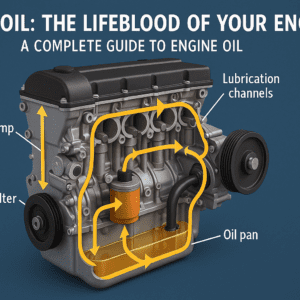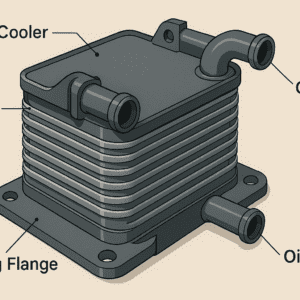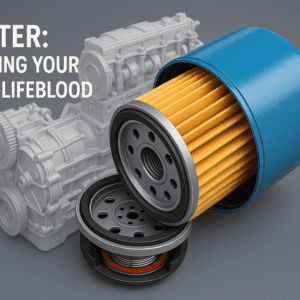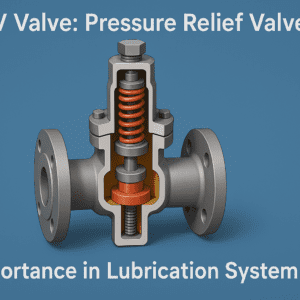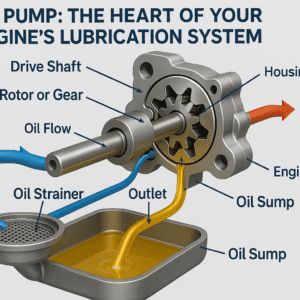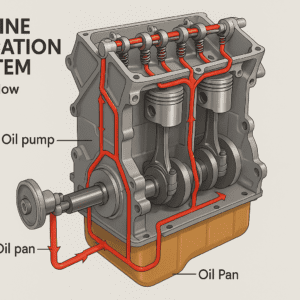
1. Definition of Oil Sump
An oil sump is at the bottom of an internal combustion engine and collects, stores and supplies engine oil for lubrication. It’s a housing for the oil after it’s been through the engine, where it cools and settles before the oil pump recirculates it. The oil sump also traps impurities so the engine runs smooth and doesn’t wear out.
1.1 Role of Oil Sump in the lubrication system of an internal combustion engine

The oil sump is part of the lubrication system of an internal combustion engine. It’s a storage tank for engine oil so there’s a constant supply for lubrication. The oil sump collects oil after it’s been through the engine, where it cools and settles impurities. It gives the oil pump access to the stored oil which is then pressurized and distributed to lubricate engine components like crankshaft, camshaft and pistons. This cycle reduces friction, minimizes wear and regulates engine temperature for better performance and longevity.
Read more about: Lubrication System
2. Components of an Oil Sump
- Drain plug.
- Gaskets and seals.
- Oil level sensor (if equipped)
2.1 Drain Plug

Hey there, fellow car enthusiasts! Let’s chat about something small but mighty important in our vehicles: the drain plug. You know, that little guy at the bottom of your engine oil sump?
2.2 What’s a Drain Plug, Anyway?
Think of it as the cork in your engine’s oil bottle. It’s a small, threaded bolt that keeps the oil in your engine where it belongs. Without it, well, you’d have quite a mess on your hands!
2.3 Why It Matters
- Keeps your engine oil in check
- Helps during oil changes
- Prevents leaks and spills
2.4 Drain Plug Care
Taking care of your drain plug is pretty simple:
- Don’t overtighten it (finger-tight plus a quarter turn is usually good)
- Replace the washer when needed
- Keep an eye out for any signs of wear
Remember: A happy drain plug means a happy engine!
2.5 When to Call the Pros
If you’re not comfortable dealing with your drain plug, that’s okay! It’s always better to ask for help than to risk damaging your engine. Your local mechanic will be more than happy to lend a hand.
So there you have it, friends! The humble drain plug might not be the star of the show, but it sure plays an important role in keeping our engines running smoothly. Take care of it, and it’ll take care of you!
3. Gaskets and Seals

Sump gaskets and seals are like the guardians of your engine’s oil. They create a tight seal between the oil pan (also called the sump) and the engine block. This seal is super important because it keeps the oil where it belongs – inside the engine.
3.1 Why are they so important?
- They prevent oil leaks: Nobody wants to see that dreaded oil spot on their driveway, right?
- They keep dirt out: These little heroes also stop dirt and debris from getting into your engine oil.
- They maintain oil pressure: A good seal helps your engine maintain the right oil pressure for optimal performance.
3.2 Signs of worn-out gaskets and seals
If you notice any of these, it might be time to check your sump gaskets and seals:
- Oil puddles under your car
- Low oil levels (even after you’ve just topped up)
- That burning oil smell when you’re driving
3.3 Taking care of your sump gaskets and seals
Regular oil changes can actually help your gaskets and seals last longer. Clean oil is less likely to break down these components over time.
Remember, a little attention to these small parts can save you from big headaches down the road!
4. Oil Level Sensor (if equipped)
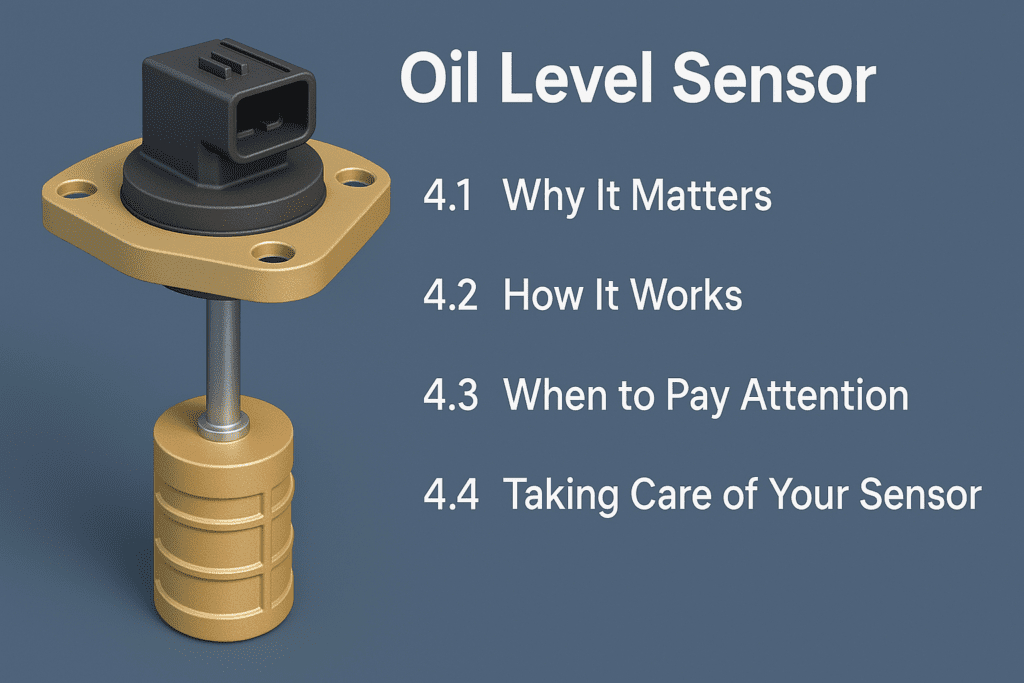
Think of the oil level sensor as your car’s personal oil detective. It’s a small device that keeps an eye on how much oil is in your engine. Pretty cool, right?
4.1 Why It Matters
You know how we need water to stay healthy? Well, your car’s engine needs oil to stay in tip-top shape. The oil level sensor makes sure there’s always enough oil to keep everything running smoothly.
4.2 How It Works
The sensor sits in your car’s oil pan, kind of like a thermometer in a pot of soup. It measures the oil level and sends that info to your car’s computer. If the oil gets too low, it’ll let you know by turning on a warning light on your dashboard.
4.3 When to Pay Attention
If that warning light comes on, it’s time to act! It’s like when your stomach growls – you know it’s time to eat. In this case, it’s time to check your oil and maybe add some more.
4.4 Taking Care of Your Sensor
Just like any part of your car, the oil level sensor needs some TLC. Regular oil changes help keep it clean and working well. It’s like giving your car a mini spa day!
Remember, a happy oil level sensor means a happy engine, and that means a happy you on the road. So next time you’re under the hood, give a little nod to this hardworking helper!
5. Functions of an Oil Sump
- Collecting and Storing Engine Oil: The oil sump is a reservoir that collects and stores the engine oil after it has gone through the engine. It’s a ready supply of oil for lubrication to prevent friction and wear on moving parts.
- Cooling the Oil: As the oil returns to the sump it’s dispersing heat picked up during engine operation. The sump’s design, often made from materials with good thermal properties, cools the oil before it’s re-circulated.
- Oil Circulation Throughout the Engine: The oil sump feeds the pump which pressurises and delivers it to vital engine parts. This is continuous lubrication, reduced friction, temperature control and engine efficiency.
Read more about: Engine
6. Types of Oil Sumps
6.1 Wet Sump Systems

Let’s chat about something that’s super important but often overlooked in our engines: wet sump systems. These unsung heroes keep our engines running smoothly, and I’m excited to share why they’re so cool!
6.1.1 What’s a Wet Sump System?
Imagine a bathtub for your engine oil – that’s basically what a wet sump is! It’s a simple yet clever way to store and circulate oil in your engine. The ‘wet’ part means the oil is kept right there in the engine, ready to go whenever you start your car.
6.1.2 How Does It Work?
The oil sits in a pan at the bottom of your engine. When you start your car, a pump sucks up this oil and sends it all around the engine, making sure every moving part gets a nice oil bath. Then, gravity brings the oil back down to the sump, and the cycle continues. It’s like a water park for your engine parts!
6.1.3 Why Wet Sumps Rock
- They’re straightforward and reliable – fewer parts mean fewer things can go wrong.
- They’re cheaper to make and maintain – your wallet will thank you!
- They work great for most everyday cars – perfect for your daily commute or weekend road trips.
6.2 Dry Sump Systems
6.2.1 What’s a Dry Sump System?
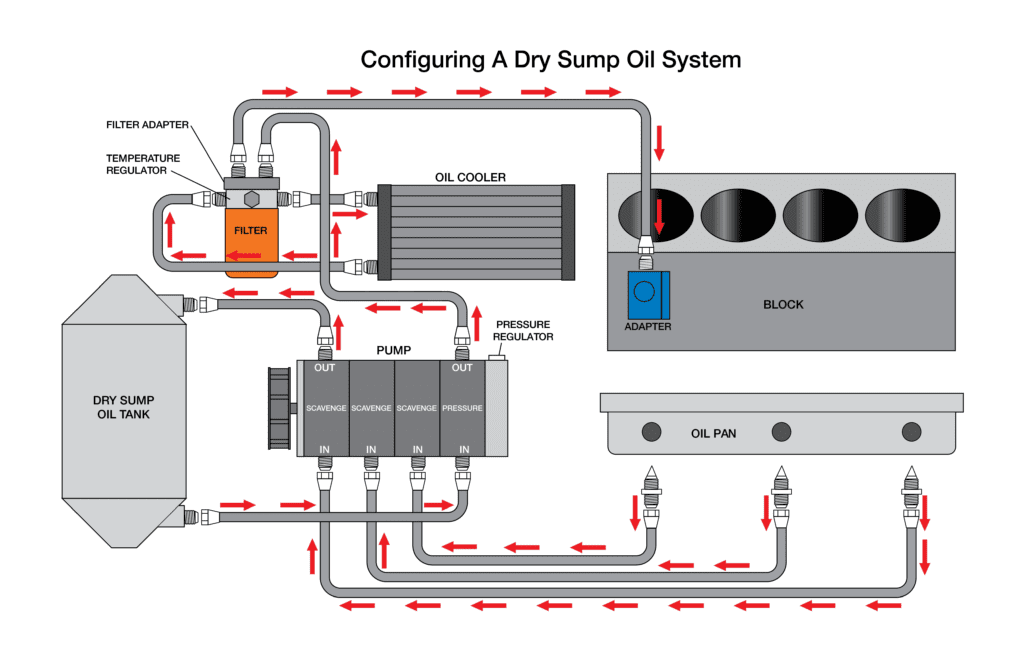
Imagine your car’s engine without that big oil pan at the bottom. That’s basically what a dry sump system is! Instead of keeping all the oil in one spot, it uses a separate tank to store most of the engine oil. Pretty neat, right?
6.2.2 How It Works
Here’s the fun part:
- Multiple pumps move oil around
- One pump sucks oil from the engine
- Another pump sends oil back to where it’s needed
- The main oil supply stays in an external tank
6.2.3 Why Some Engines Use Dry Sump Systems
There are some cool reasons for using this setup:
- It’s great for high-performance cars and racing
- Helps prevent oil starvation during hard cornering
- Allows engines to sit lower in the car
- Can improve engine cooling
Fun fact: Many race cars and some high-end sports cars use dry sump systems to keep their engines happy during intense driving!
Read more about: Firefighting
7. Differences and Applications
- Oil Storage: Wet sump stores oil in the engine pan; dry sump stores oil in an external tank.
- Design Complexity: Wet sump is simpler; dry sump is more complex and more parts.
- Performance: Dry sump is better oil circulation and cooling under extreme conditions, good for high performance applications.
- Cost: Wet sump is cheaper, dry sump is more expensive to design and maintain.
8. Materials Used
8.1 Common Materials
- Aluminum: always used because of its light weight.
- Steel: used for continuity and cost.
- Composite Accoutrements: in some advanced designs, mixes or reinforced plastics are used for weight reduction and erosion resistance.
8.2 Benefits of this materials
Aluminum
- Overall vehicle performance.
- Good heat dispersion parcels, oil sump cooling.
- erosion resistant, continuity.
Steel
- High strength and impact resistance, durable in harsh conditions.
- Cheaper and widely available.
Composite Accoutrements
- Very light, better energy efficiency.
- Erosion and chemical resistant, longer life. Material choice depends on operation, performance condition and cost of the vehicle.
9. Oil Sump Problems
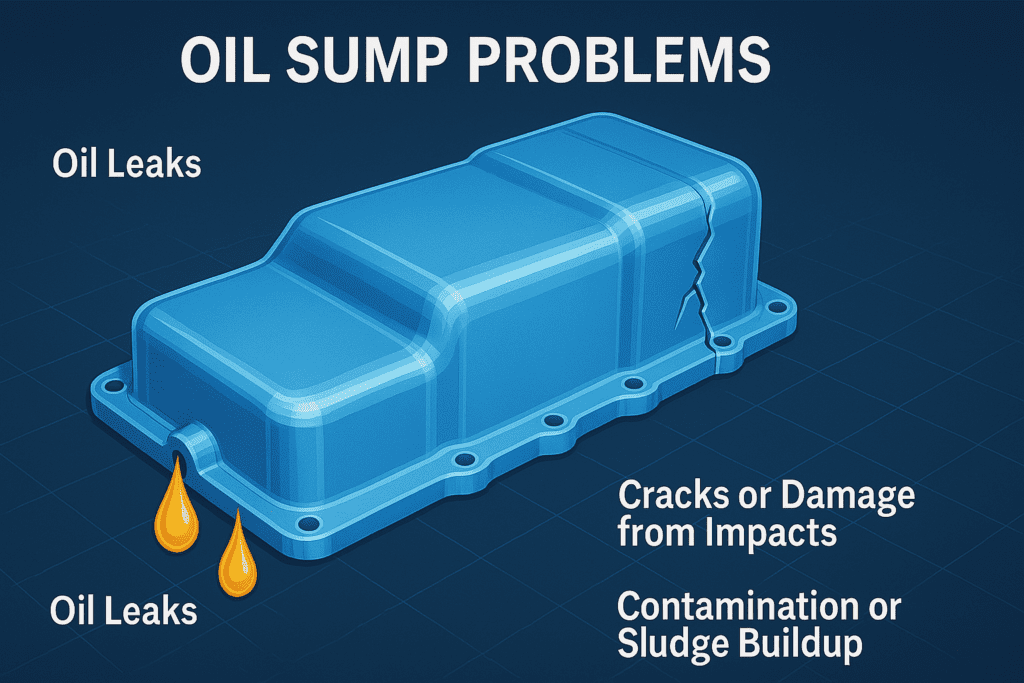
- Oil Leaks: Oil leaks from the sump occur when gaskets are damaged, seals are worn out or bolts are loose. Over time these components wear out and oil seeps out which can affect engine performance and environmental concerns.
- Cracks or Damage from Impacts: The oil sump is located at the bottom of the engine and is prone to impacts from road debris, speed bumps or rough terrain. Impacts can cause cracks or dents which can lead to oil loss and severe engine damage if not addressed immediately.
- Contamination or Sludge Buildup: Contaminants like dirt, metal particles or old oil can accumulate in the sump and form sludge. This buildup can reduce oil circulation, hinder lubrication and overall engine performance. Regular maintenance and timely oil change is necessary to prevent this.
10. Maintenance and Repair of Oil Sump

- Check for Leaks: It’s important to check the oil sump regularly for any signs of leaks. Leaks can occur around the sump pan, drain plug or gasket and can cause oil loss and engine damage. Identifying and repairing leaks early on will maintain oil level and engine health.
- Cleaning the Oil Sump during Oil Change: During oil change, it’s important to clean the oil sump to remove sludge, debris or old oil. This will allow new oil to circulate well and prevent contaminants to damage the engine.
- Proper Gasket Replacement: The oil sump gasket seals the sump to the engine block. Over time the gasket can wear or damaged and can cause oil leaks. It’s necessary to replace the gasket whenever necessary to maintain a good seal and prevent leaks, for optimal engine performance.
11. Importance of Oil Sump in Engine Performance
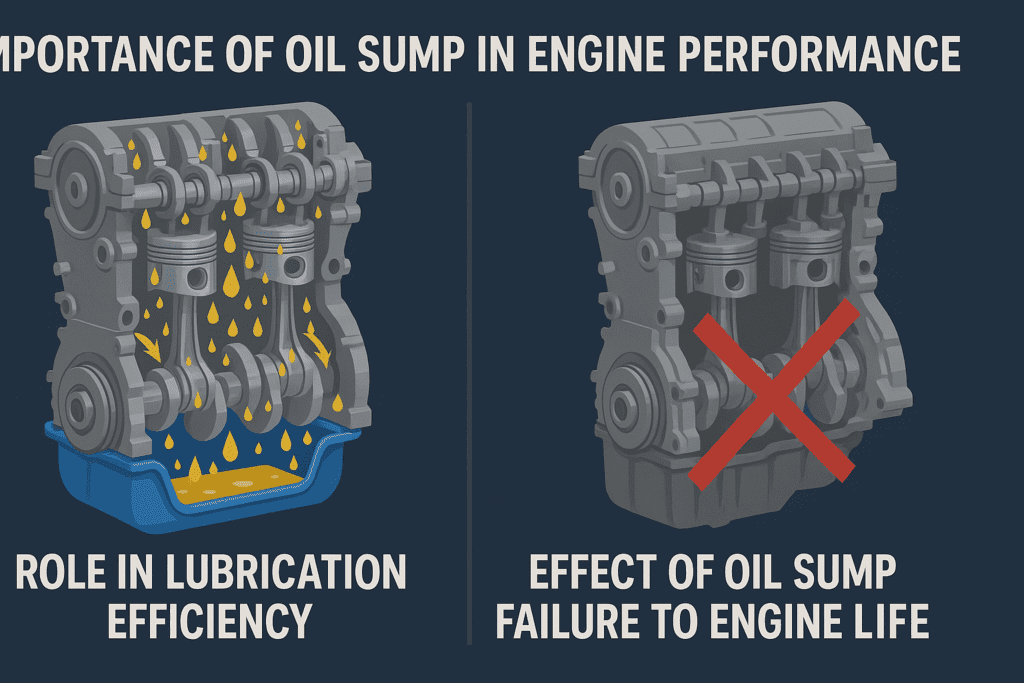
The oil sump is important in engine performance by ensuring proper lubrication and cooling of engine components. Here’s a brief of its importance:
- Role in Lubrication Efficiency: The oil sump holds the engine oil which circulates throughout the engine to lubricate moving parts, reduce friction and prevent wear. The sump supplies constant oil to the oil pump to maintain optimal oil pressure. It also cools the oil as it flows back to the sump after circulating through the engine.
- Effect of Oil Sump Failure to Engine Life: If the oil sump fails or damaged it can cause oil leakage or insufficient oil supply to the engine. This will result to lack of lubrication which will increase friction and wear on engine parts. In the long run this can cause overheating, reduced engine performance and even engine failure which can shorten engine life. So it’s important to maintain the oil sump to ensure engine life.
12. Conclusion
Summary of oil sump importance in vehicle operation:
The oil sump is crucial in smooth operation of a vehicle engine. It’s the reservoir of engine oil which lubricates moving parts and cools the engine. A well maintained oil sump contributes to overall performance, life and efficiency of the engine, prevents friction, overheating and wear.
- Tips:
- Check oil level and top up when necessary.
- Change engine oil as recommended to prevent contamination and lubrication.
- Check the oil sump for cracks or damage that can cause leaks.
- Use the right type and grade of oil as recommended by the manufacturer.
- Change oil filter regularly to prevent dirt and debris from circulating in the engine.
- Keep the area around the oil sump clean to prevent contaminants to enter the system.
13. FAQ on Oil Sump
- What is oil sump?
Oil sump is a reservoir located at the bottom of the engine that holds engine oil. It’s a vital part of the lubrication system to lubricate engine moving parts to reduce friction and overheating.
2. Why oil sump is important?
The oil sump holds and collects oil that lubricates engine internal components. This reduces wear and tear, maintain engine temperature and prevent engine from seizing due to lack of lubrication.
3. How do I know my oil sump is leaking?
Common signs of oil sump leak are low oil level, oil stains under the vehicle and burning oil smell. In some cases you may hear unusual engine noise due to lack of lubrication.
4. How often to check oil sump?
Oil sump should be checked during routine oil change or during other vehicle maintenance. It’s also good to inspect the sump for damage or leaks at least once a year.
5. Can an oil sump get damaged?
Yes, the oil sump can indeed sustain damage, often due to impacts, rust, or cracks. Such physical damage can lead to leaks, which, if not addressed quickly, may result in engine issues.
6. How can I maintain the oil sump?
To maintain the oil sump, regularly check the oil levels, follow the manufacturer’s guidelines for oil changes, and inspect the sump for any signs of damage or leaks. Using the right type of oil and keeping the engine clean can also help preserve the sump’s condition.
7. What happens if the oil sump runs dry?

If the oil sump runs dry, the engine may suffer from severe friction and overheating, which can lead to significant engine damage. This situation can result in expensive repairs or even engine failure, so it’s essential to keep the oil level adequate.
8. Can I replace an oil sump myself?
Replacing an oil sump can be a complicated job that might require specialized tools. It’s advisable to have a professional mechanic perform the replacement to prevent any damage to the engine or its performance.
9. What is the role of the oil pump in relation to the oil sump?
The oil pump plays a crucial role by circulating the oil stored in the oil sump throughout the engine, ensuring that all components receive proper lubrication. It works alongside the oil sump to maintain optimal engine performance.
10. Can I use any oil in the oil sump?
You should not use just any oil in the oil sump; always opt for the oil recommended by the vehicle manufacturer. Using the correct oil type and grade is vital for optimal engine performance and helps prevent damage to both the oil sump and the engine.
Visit website: Autobiography Zone
